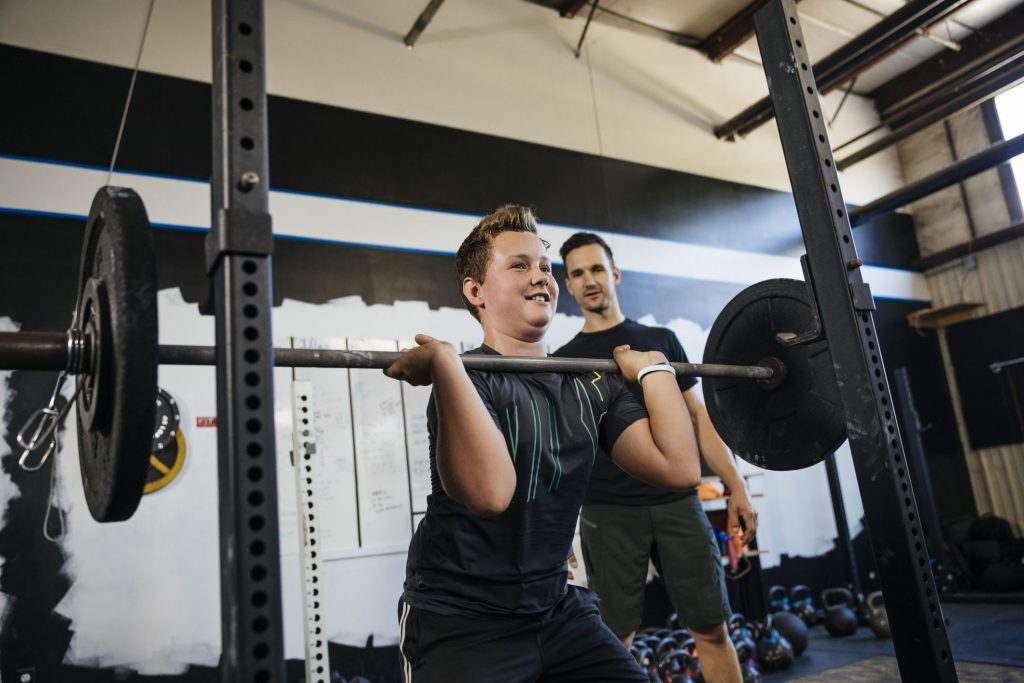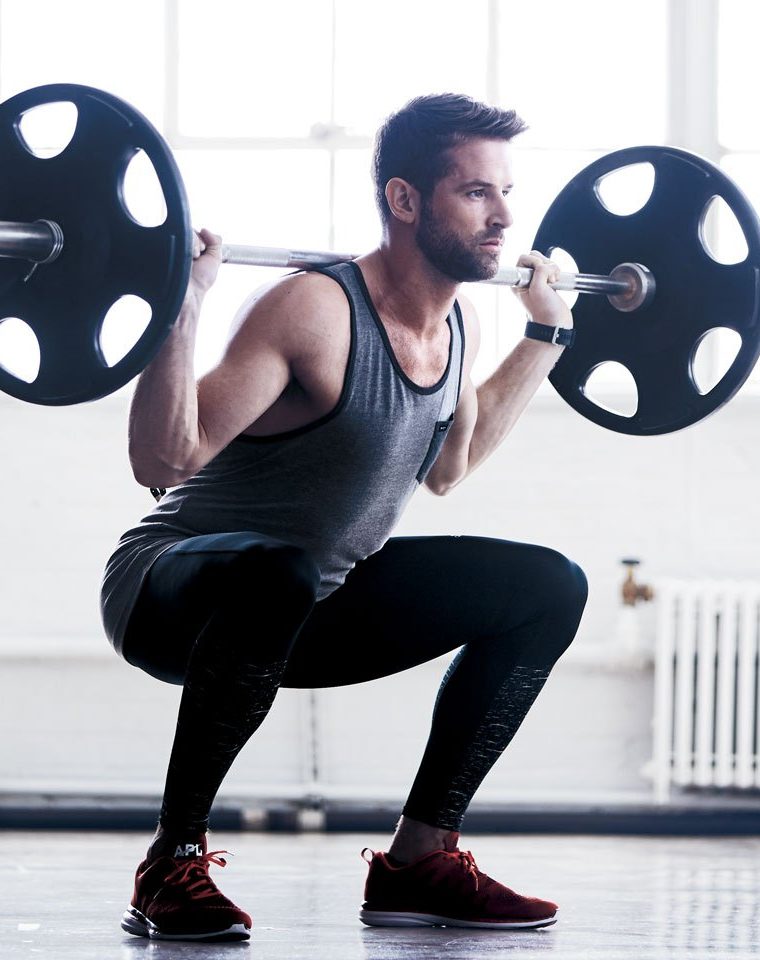When you’re a parent of a young athlete, many questions are bound to cross your mind. A common concern of such parents is; does weight lifting stunt growth?
Most parents are terrified by the idea of sending their children to strength training programs. Even the fitness fraternity believes that strength training can cause weakness or damage to the epiphyseal growth plate in children.
This common belief has kept a lot of juveniles and youth athletes away from the exercise and weight room for a long time.
But there’s no scientific evidence to support this fact. To help you understand things better, we’ve discussed here the impact of strength training on growth.
Does Lifting Weights Stunt Growth: Science Behind It
According to the myth, lifting weights and physical growth does not go hand in hand. But what does science have to say about this? Let’s have a look-
A scientific review provided by the British Journal of Sports Medicine found it entirely safe for kids and adolescents to carry out resistance training under professional guidance. The Australian Strength and Conditioning Association also allowed training for kids above 6 years of age under constant supervision.
Scientists and health professionals have also concluded from their research findings that there is no impact of lifting weights on epiphyses of long bones growing in children. It is not related to growth plate fractures and sports-related injuries.
Most doctors and medical professionals imply that an injury can occur in epiphyseal growth plates during resistance training when the bones are underdeveloped or lack proper monitoring.
Otherwise, there is no scientific basis that says resistance training programs can negatively impact growth plates. So feel free to look at how to get abs overnight with Gravity Transformation, or any other instructor, without worrying about this.
So, you can be assured that “weight lifting stunts growth” is a myth that lacks supporting evidence.

Advantages of Lifting Weights
Science does not support the myth regarding weightlifting and stunted growth. But science does say that there are many benefits of lifting weights. Let’s have a look at some of them –
- Builds Power
Building power among children and adolescents is the most important benefit of strength training. Especially when it comes to kids planning to join athletics and different sports, this program can be a significant step towards achieving their dreams.
Regular strength training programs can boost the power and vigor of young athletes. It keeps them focused and helps them achieve the strength they’re working for.
Scientific research concludes that kids and adolescents who regularly participated in some strength training improved power, body composition, and body strength gains. Health professionals believe that avoiding any exercise can negatively impact development in the case of most kids.
- Improves Core Strength
One of the most important benefits of working out with weights is its ability to improve core strength. Rather than the myth about stunting development, it has a positive effect on improving muscular strength.
The core is a very sensitive area in adolescents, and working out plays a vital role in building the strength of this core.
When the core is strong, children and adolescents suffer from fewer sprains and strains and strongly resist injuries occurring during sports. It also minimizes the risk that arises due to reduced bone strength, diminished bone density, etc.
Besides, with regular workouts, bones grow in a healthy manner, and there is a reduced risk of bone damage. Overall, lifting weights is highly protective on kids, early pubertal youth, and training adolescents.
- Promotes Mental Wellbeing
Research has shown that training has not only beneficial effects on the physique but also the mind.
This kind of training helps children and young juveniles build a lot of strength which boosts their confidence. Confidence and self-assurance highly promote their mental wellbeing.
A child becomes more focused and wants to work harder in every aspect of life. A sound body is responsible for a sound mind in all spheres of life; this is the principle that works in the case of training as well.
While working out, adolescents experience a significant improvement in their focus, self-esteem, and morale, which positively impacts their psychological health.
How to Do Resistance Training Safely?
Since children and adolescents are inexperienced when they start lifting weights, there might be some risks involved. The whole process should be done in a safe and secured manner under professional guidance to avoid weight lifting injuries and any sore muscles. Although there are simple solutions if soreness does occur including certain muscle relaxant creams and things like the best CBD oil, but it is always best to be as safe as possible when working with weights.

Let’s have a look at some of the ways you can do weightlifting safely –
- Start Slow
With weightlifting, the key is to start at a slower pace. No one becomes a master in a strength training program at once. It takes effort and time to achieve desired results. You can’t start resistance training instantly with a heavier weight or become a professional within a week.
So, we recommend going for lighter weights, basic exercises, and then gradually building your way up to heavier weights. Of course, the whole process should be done under proper supervision to obtain the best outcome. Adults can also take nutritional supplements for muscle strength (check this complete guide to learn more), but do consult your professional trainer/nutritionist to be cautious.
- Begin with Basics
It isn’t easy to lift weights for a child of any age, which is why health professionals recommend starting with the basics. Instead of jumping straight to a weight training program with free weights and heavy pushups, begin by regular warming up and simple bodyweight exercises.
Ideal body weight exercises would be planks, bench presses, sit-ups, and squats to strengthen your core and move towards resistance training. It will be the only way to build strong defiance towards trauma and make resistance training seem simple enough.
- Train Under Professional Guidance
Most kids are amateur when it comes to weightlifting, so constant supervision is a must for them. They can only achieve their desired results when professionals train them.
In fact, a personal trainer knows best how to plan a strength training protocol for them according to their age, body awareness, and capability. They can also guide a child throughout the process to follow instructions, obtain a proper form and build muscle without any risk of injury. Lifting weights with proper form is something that all teenagers should pay close attention to. Working out would be futile without proper form as it may not give desired results, and in the worst-case scenario, you might get injured. For those of you that cannot get hold of a trainer for a certain day of workout, let’s say a tricep day, you can at least read online articles and web pages that can provide guidelines on how to perform the most effective tricep exercises with a good form.
Besides, training under professionals also involves going through health checkups to eliminate any health risks to children and adolescents. Ultimately, your child of any age can train under the safest circumstances with the help of a professional trainer.
Conclusion
So, does weight lifting stunt growth?
It can be said that the myth regarding lifting weights stunt growth is definitely inaccurate. In fact, strength development has been linked to weightlifting in studies.
From improving physical and mental soundness to boosting motor skills, weightlifting has multiple benefits. However, young athletes and adolescents can only achieve positive results from strength training under safe and secured supervision.
